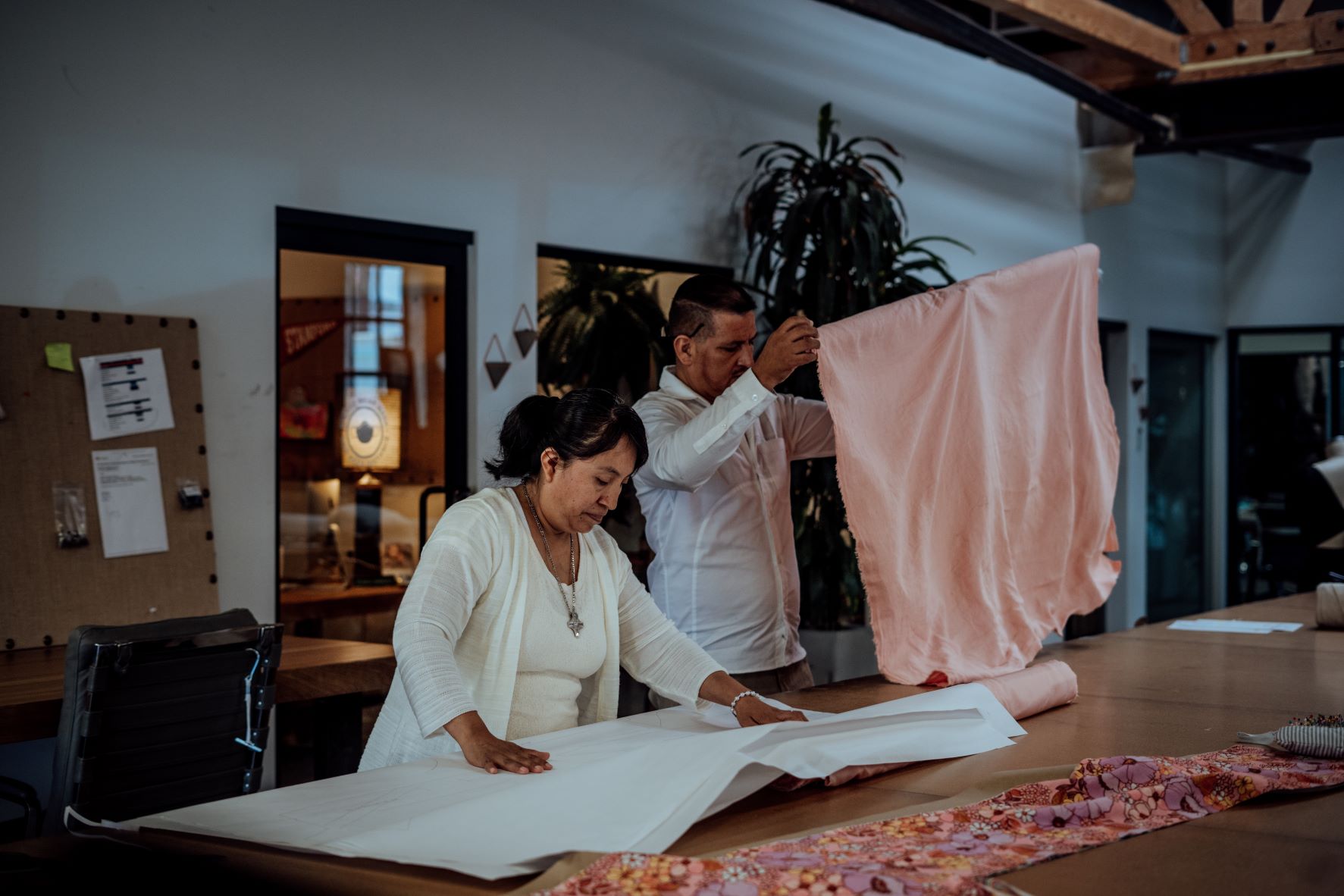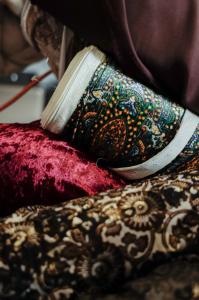Notable Los Angeles clothing manufacturer The Evans Group (TEG) recently offered some advice to regular readers about the clothing supply chain.
It’s so important for everyone, designer or not, to understand the steps involved in manufacturing clothing and other goods. I think it opens up new possibilities for more creative options”
LOS ANGELES, CALIFORNIA, UNITED STATES, July 13, 2022 /EINPresswire.com/ -- With the topic of the supply chain in the news and the brain of every business owner, big and small, consumers must understand more about the ins and outs of supply chains. — Jennifer Evans
TEG made a concerted effort to inform readers and independent fashion designers about the clothing supply chain to shed light on the process and how it plays a massive role in fashion design and production.
What Is The Clothing Supply Chain?
The clothing supply chain is more than just ‘designing clothes from point A to point B.’ It’s a bonafide, detailed process that takes fashion sketches and turns them into fashion collections.
The Los Angeles clothing manufacturer, founded by Jennifer Evans in 2005, has vast experience with the clothing supply chain within the fashion industry.
“The clothing supply chain is the sequence of events that make up everyone's favorite couture,” states TEG.
“From design to the closet, a lot goes into creating a fashion collection. For example, experts must choose the perfect fabric and textiles for a clothing line. But what happens after they square away selecting the best fabric to use in a fashion line.”
Firstly comes the design process. A process that Jennifer Evans and her talented staff of textile workers and designers know all too well. With over 2,000 satisfied indie fashion designers in its portfolio, it’s safe to say that TEG earned its reputation as a leading fashion production house in Los Angeles.
The Steps Of The Clothing Supply Chain
TEG breaks down the clothing supply chain into five easy steps to understand: design, textiles, creation, distribution, and purchase.
“Breaking this complex process down into easy-to-understand steps is a great way to bring in designers and readers who might not have even thought of the clothing supply chain otherwise.”
Starting with the design, TEG explains that this kicks off every subsequent supply chain step. Indie fashion designers work alongside people who source fabric and help them sketch and nail their designs.
Next, emphasizing the importance of textiles and fabric sourcing, TEG explains that,
“Without the production of raw materials, even a designer’s most ambitious fashion drawings mean little to nothing. That’s where the fashion supply chain comes in to make fashion products a reality. The textile creation process in the supply chain starts from growing the materials. It’s the growth of materials, dyeing them, and weaving them into the fabric.”
The process then goes into creating, distributing, and purchasing clothing.
These steps are where TEG’s professionals let their skills come to the fore. Taking pieces of clothing, fabric, and designs, the seamstresses and Los Angeles pattern makers at TEG get to work creating clothing.
Then it's up to the designer what they want to do with a finished clothing line. Will they sell it in a boutique? Will they aim a little higher with more prominent clothing retailers?
Either way, TEG offers a step-by-step guide to unlocking what designers want to do with their finished products.
The Fashion Mentoring Program At TEG
While the clothing supply chain looms large in all of our lives, TEG understands that many would-be designers need an extra push. Maybe it’s more resources to design as a full-time job, or it's embracing the vast creative opportunities of the past two years.
Either way, TEG recognized that it served indie designers well and could do more for creatives unfamiliar with the fashion industry.
That’s where the TEG fashion mentoring program comes in to change the game.
The program, focused on assisting people with zero prior experience, helps pair up fashion designers with a fashion mentor, a talented and accomplished designer who serves as a guide.
“We knew we wanted to do more for those looking to create a clothing line,” says Evans.
And indeed, the newly created fashion mentorship program, along with introducing people to the clothing supply chain, gives those who dreamed of starting a clothing line a chance to break into the fashion industry.
Before diving into the work, Jennifer Evans herself hand picks a talented fashion mentor to assist designers. This added expertise allows like-minded personalities and creatively compatible people to gel with one another and thrive.
“Fashion mentors are a designer's guide through both the supply chain and every step in creating a dream fashion line. Creating an ambitious project can be scary, especially if fashion has always felt out of reach. With a good fashion mentor, creating clothing has never been more accessible.”
Becoming Part Of The Clothing Supply Chain With TEG
In essence, the clothing supply chain serves as the fundamental framework for apparel, from design to retailers. As a designer, TEG believes that knowing more about the clothing supply chain and its effects on the Global South and women is the key to enveloping oneself in the industry.
“It’s so important for everyone, designer or not, to understand the steps involved in manufacturing clothing and other goods. I think it opens up new possibilities for more creative options.”
More About The Evans Group (TEG)
The Evans Group, founded in 2005, is a full-service fashion development and production house based in Los Angeles and San Francisco. Since its inception,
The Evans Group has worked with over 2,000 clothing brands and designers to create luxury clothing.
Learn more about The Evans Group on its website: https://tegintl.com
Jennifer Evans
The Evans Group
+1 800-916-0910
email us here



